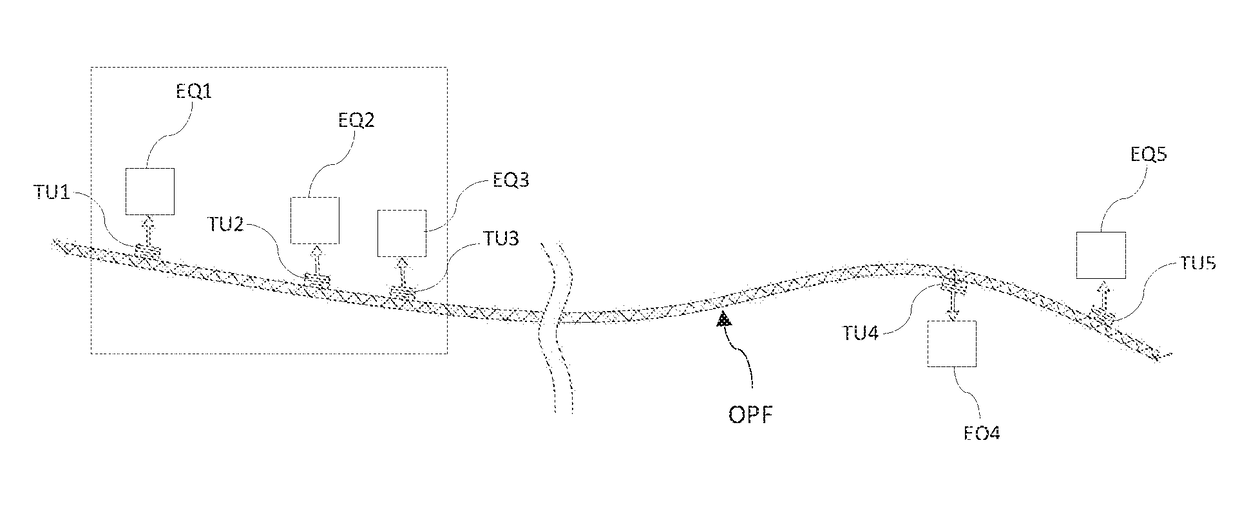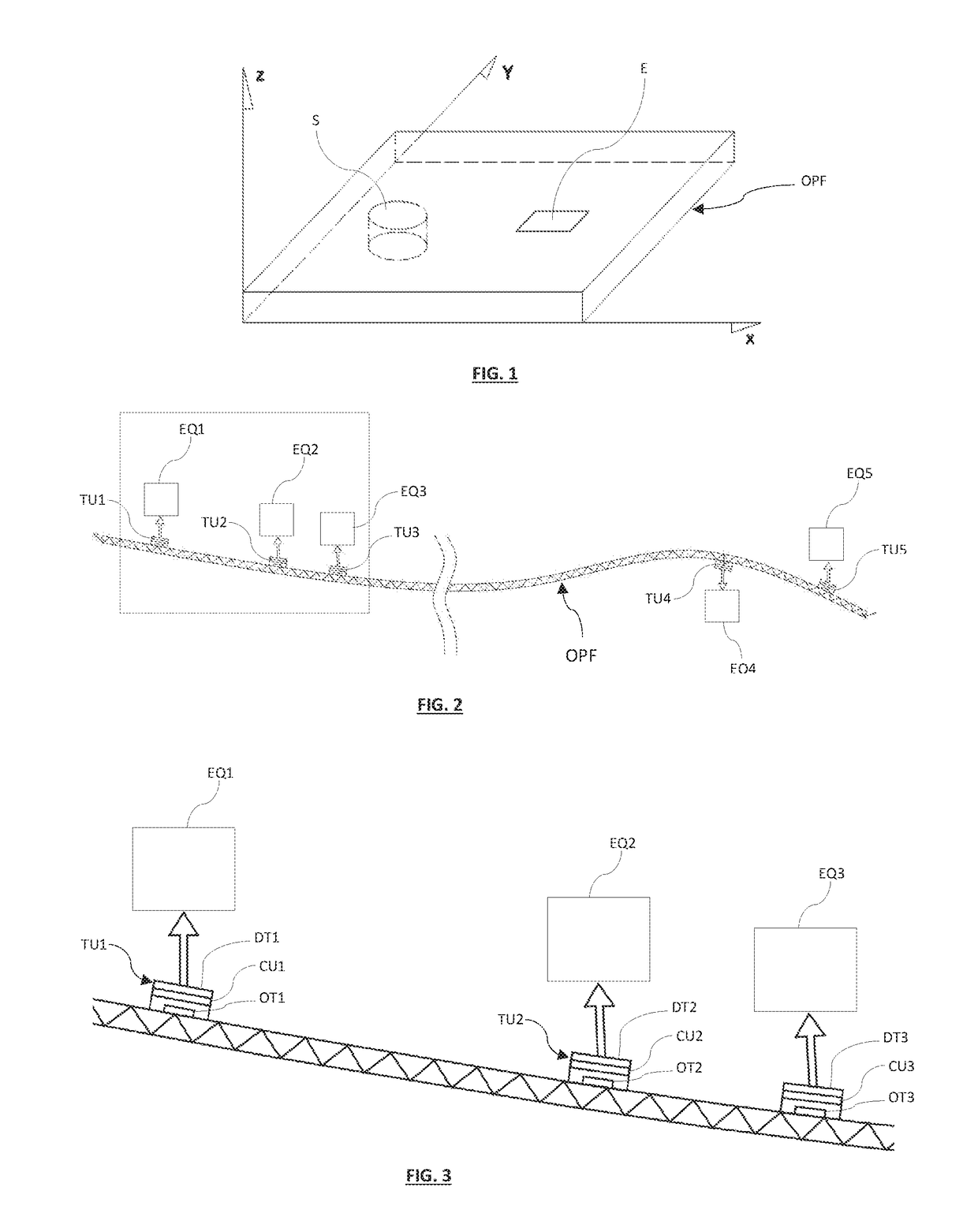Fault tolerant optical apparatus
a technology of optical apparatus and fault tolerance, applied in electromagnetic transmission, remote controlled aircraft, transmission, etc., can solve the problems of limiting aircraft availability and profitability, system failure, and increasing weight at the expense of payload, so as to improve bandwidth, enhance light diffusion and scattering, and resist emp aggression. inherent resilien
- Summary
- Abstract
- Description
- Claims
- Application Information
AI Technical Summary
Benefits of technology
Problems solved by technology
Method used
Image
Examples
Embodiment Construction
[0055]The following detailed specification is exemplary in nature and is not intended to limit the disclosure or the application and uses of the embodiments of the disclosure. Descriptions of specific devices, techniques, and applications are provided only as examples. As would be apparent to one of ordinary skill in the art after reading this specification, the following are examples and embodiments of the disclosure and are not limited to operating in accordance with these examples. Other embodiments may be used and structural changes may be made without departing from the scope of the exemplary embodiments of the present disclosure.
[0056]Embodiments of the disclosure may be described herein in terms of functional and / or logical block components and various processing steps. It should be appreciated that such block components may be realized by any number of hardware, software, and / or firmware components configured to perform the specified functions. For the sake of brevity, conve...
PUM
 Login to View More
Login to View More Abstract
Description
Claims
Application Information
 Login to View More
Login to View More - R&D
- Intellectual Property
- Life Sciences
- Materials
- Tech Scout
- Unparalleled Data Quality
- Higher Quality Content
- 60% Fewer Hallucinations
Browse by: Latest US Patents, China's latest patents, Technical Efficacy Thesaurus, Application Domain, Technology Topic, Popular Technical Reports.
© 2025 PatSnap. All rights reserved.Legal|Privacy policy|Modern Slavery Act Transparency Statement|Sitemap|About US| Contact US: help@patsnap.com



